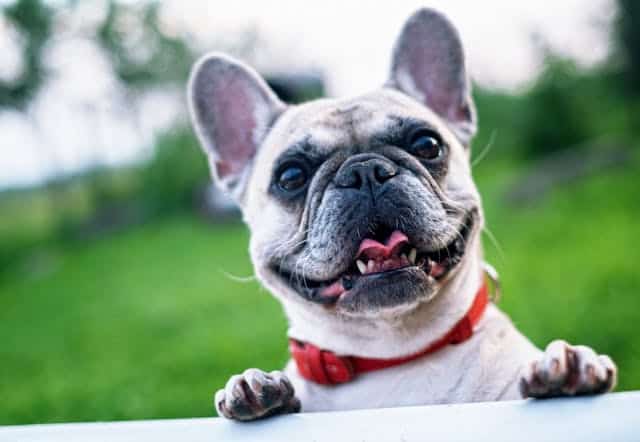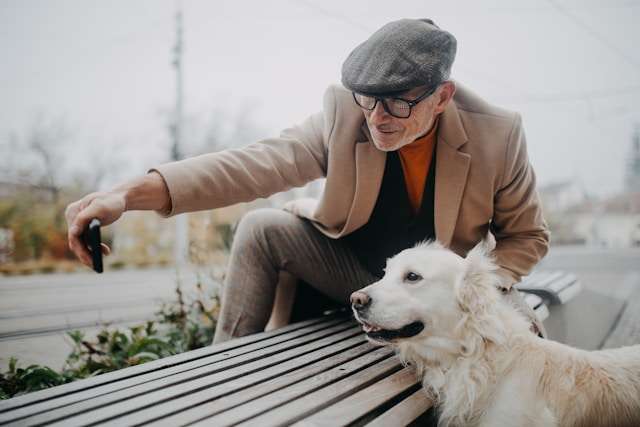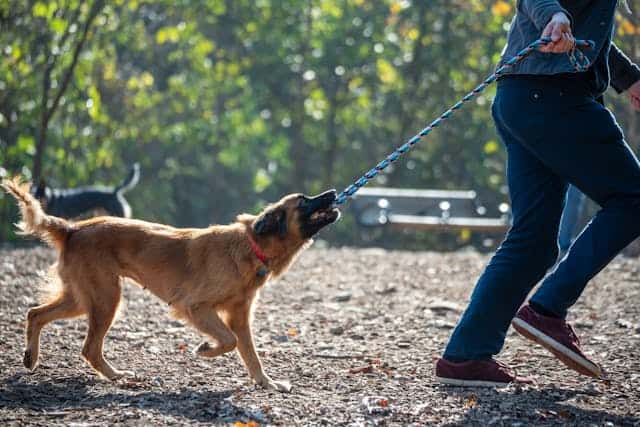How to House Train a Shih Tzu: Stress-Free Tips for Success

How to House Train a Shih Tzu. House training a Shih Tzu can feel like a challenge, but it doesn’t have to be. These adorable dogs are known for their independent streaks and sensitive natures, requiring patience and consistency.
Understanding their unique personality and setting up simple routines will make the process smoother for both of you. If you’re ready to create a training plan for success, check out How To House Train A Shih Tzu: Stress-Free Tips 2024.
Table of Contents
Understanding Shih Tzu Temperament and Behavior
House training for Shih Tzu starts with understanding their personality. These small yet spirited dogs have big attitudes packed into pint-sized bodies. Whether they’re stubborn or sensitive, learning what makes them tick will help you build a training routine they respond to.
The Independent Streak of Shih Tzus
Shih Tzus are known for their independent spirit. While their confident attitudes make them entertaining, this independence can sometimes manifest as stubbornness. If you’ve ever found your Shih Tzu staring at you like they’re thinking, “I’ll do it later,” you’re not alone.
This streak highlights the need for extra patience and consistency during training. Rather than frustration, approach their independence as a chance to bond. Use positive reinforcement techniques like treats or praise to encourage behaviors you want. Remain consistent in your cues because any inconsistency may give your Shih Tzu mixed signals. After all, they are very good at detecting hesitation!
Consistency, love, and firmness will slowly chip away at that resistant streak, paving the way for smoother training sessions.

Photo by Aisha
Why Understanding Signals is Crucial
Communication is a two-way street, and Shih Tzus are incredibly subtle when expressing their needs. Instead, they may not bark or whine like other breeds, relying on body language. A sudden sniffing session in the corner? That’s their way of saying, “Hey, I need to go outside!” Recognizing these signals is a game-changer when house training.
When you learn to interpret your Shih Tzu’s unique cues, you can respond promptly, reinforcing good habits. Keep in mind that catching these signals early can significantly reduce accidents. Want more tips for stress-free house training? Read more at How to House Train a Shih Tzu: Stress-Free Tips 2024.
By combining patience with an understanding of their body language, you’ll empower your Shih Tzu to succeed in training. This relationship will not only improve their behavior but also strengthen the bond you share.
Pre-Training Preparation for Your Shih Tzu
Before you dive into house training your Shih Tzu, preparation is everything. The proper setup, supplies, and schedule will make the process much easier for you and your furry friend. A little planning now can prevent a lot of frustration later.
Setting Up a Designated Space
Your Shih Tzu needs a specific spot for potty breaks. Consistency is the key, whether it’s an outdoor area or a corner in your home with training pads. Dogs thrive on routine and predictability, and a designated potty area helps reinforce where they should go. This minimizes confusion, making the process feel more natural to them over time.
Pick a quiet and low-traffic spot in your house if you’re using an indoor setup. Line the area with training pads to keep everything clean and manageable. Always bring them to the same spot for outdoor training to build familiarity. Think of it as creating a tiny bathroom just for them!
Stocking Essential Supplies
Preparation is incomplete without the right tools. Having the correct supplies on hand will save time and ensure smooth training sessions. Here’s a list of must-haves:
- Training Pads: Ideal for indoor potty training or emergencies when you can’t take your Shih Tzu outside.
- Enzyme-Based Cleaning Solutions: These obliterate odors and discourage your dog from returning to the same spot to potty.
- Dog Treats: Tasty rewards go a long way in encouraging good behavior. Use them right after your Shih Tzu uses the designated potty area.
- Leash and Collar: These are essential for outdoor training and ensuring your dog’s safety.
- Patience and Consistency: Okay, not a physical item, but no less critical!
These items won’t make your life easier—they’ll make training more transparent and effective for your Shih Tzu. For additional tips on preparing for a Shih Tzu puppy, check out How to Prepare for a Shih Tzu Puppy | Dog Ownership.
Scheduling and Routine Planning
A consistent schedule is your secret weapon when training a Shih Tzu. Their small bladders mean frequent potty breaks are necessary, especially for young puppies. Plan to take them out first thing in the morning, after meals, and before bedtime. Sticking to consistent times helps build their internal clock, making accidents less likely.
Shih Tzus also loves routine and structure. By keeping feeding times, playtimes, and potty breaks organized, they’ll know exactly what to expect each day. This keeps their stress levels low and makes learning easier. For more specifics on the Shih Tzu’s personality and lifestyle needs, look at Shih Tzu Traits, Pros, and Cons Every Dog Lover Should Know.
Does this approach require some dedication? Yes, but the results will be worth it! A consistent routine will set the foundation for a successfully trained Shih Tzu.
Techniques for House Training a Shih Tzu
Training your Shih Tzu to become housebroken involves consistency, patience, and strategies tailored to their unique personality traits. These adorable companions thrive on routine and positive reinforcement, making the process smoother with the right approach. Below, you’ll find several effective techniques to guide your Shih Tzu’s house training journey.
Positive Reinforcement Strategies: Detail how to utilize treats and praise effectively.
Positive reinforcement is one of the best ways to motivate your Shih Tzu. Dogs, like us, are more likely to repeat behaviors that lead to rewards. Incorporating this method into house training will help your Shih Tzu quickly learn where and when they’re supposed to go.
Use Treats Wisely: Always have small, tasty treats handy while training. When your Shih Tzu successfully uses the designated potty area, reward them immediately. Timing is critical—if you wait too long, they might not associate the treat with their success.
Add Verbal Praise: A cheerful “Good job!” or “Well done!” goes a long way. Your tone matters more than the words. Be enthusiastic and make them feel proud.
Keep Sessions Short but Consistent: Shih Tzus can lose attention quickly. Frequent, short training sessions with plenty of rewards will keep them engaged and eager to learn.
Avoid punishment when accidents happen; redirecting them with kindness promotes trust. See How to Potty Train a Shih Tzu: 10 Vet-Approved Tips for more positive reinforcement tips.
Crate Training Benefits and Tips: Discuss introducing crate training for housebreaking success.

Photo by Helena Lopes
One of the most effective house-training tools is a crate. When introduced properly, a crate becomes your Shih Tzu’s haven and a key component in housebreaking.
Start Small: Begin by leaving the crate door open, encouraging your Shih Tzu to explore it at their own pace. Toss some treats or toys inside to make it inviting.
Make It a Positive Space: Avoid using the crate as punishment. The goal is to have your Shih Tzu associate it with comfort and relaxation.
Timing is Key: When you can’t monitor them closely, the crate helps prevent accidents. Dogs naturally avoid soiling their sleeping area, which reinforces bladder control. However, please don’t leave them in the crate for too long. Puppies can only hold their bladder for about one hour per month of age.
Crate training and a routine potty schedule can lead to faster house training results. If you’re ready to start crate training, you can explore additional tips at Shih Tzu Training Secrets.
Using Timing to Your Advantage: Explain why taking your Shih Tzu outside after eating, playing, or waking up can help.
Shih Tzus thrives on schedules, and timing potty breaks around their natural rhythms makes house training easier. This breed has a fast metabolism, so they’ll need frequent trips outside, especially after specific activities.
- After Meals: Take your Shih Tzu outside 10-15 minutes after they eat. Food stimulates digestion, which
is when they’re most likely to need a potty break.
After Playtime: Play often ignites energy, quickly leading to an urge to go. Be proactive by guiding them to their potty area right after play sessions.
After Naps: Waking up means it’s time to potty. Immediately take your dog to their designated spot, reinforcing the association between waking up and using the bathroom.
Frequent, consistent timing teaches your Shih Tzu when and where they’re supposed to go. Supporting this routine can lead to quicker housebreaking success. For more insights on Shih Tzu behavior and training, see Helpful Housetraining Hints.
Addressing Accidents Constructively: Share ways to manage accidents and reduce future incidents.
Accidents are inevitable during house training, but how you respond plays a massive role in your Shih Tzu’s progress. Here’s what to do:
Stay Calm: Avoid yelling or scolding when accidents occur. Shih Tzus are sensitive, and punishment can make them anxious, leading to more accidents.
- Clean Thoroughly: Use enzyme-based cleaners to remove odors altogether. Dogs are more likely to return to spots where they can
smell their mess.
Redirect Behavior: If you catch them mid-accident, calmly interrupt and guide them to their designated potty area. Reward them if they finish in the right spot.
- Learn from Patterns: Take note of when and where accidents happen. Is it typically after a meal or at a particular
spot in your house? Addressing these patterns proactively can help prevent recurrences.
Accidents don’t mean failure—they’re part of the learning process. You’ll set your Shih Tzu up for long-term success by responding with patience and guidance. Check out Shih Tzu House Training | Step-by-Step | Finding Success for more techniques.
Common Challenges and How to Overcome Them
House training for Shih Tzu can come with challenges, but understanding the difficulties and having strategies to address them makes all the difference. Preparation is key, whether it’s dealing with training regressions or starting fresh with an older dog. Below, we’ll explore practical solutions for these common hurdles.
Dealing with Regression in Training
No matter how diligent you are, setbacks can happen. Training regression might occur due to changes in routine, stress, illness, or even testing boundaries. Don’t panic—here’s how to steer things back on track:
Reassess Routine: Have feeding or potty schedules changed recently? Dogs thrive on consistency, so re-establishing a schedule often resolves regression.
Revisit Basics: Go back to square one with house training as if they’re learning for the first time. This reinforces the rules.
Limit Freedom: Temporarily restrict access to areas where accidents occur. This prevents further mistakes while reinforcing proper potty behaviors.
Reward Repetition: Always reward your Shih Tzu when they succeed, even if they used to do it reliably before. Positive reinforcement rebuilds confidence and motivation.
Mistakes during regression are not a sign of failure but a chance to fine-tune your training methods. For further guidance on overcoming common housebreaking problems, check out Troubleshooting Housetraining Problems with Your Dog.
Managing Training for Older Shih Tzus
Training an adult or rescue Shih Tzu presents unique dynamics, as they may have deeply ingrained habits. But with the right approach, even older dogs can master house training.
Review Their History: If possible, learn about their past potty training (or lack thereof). This can offer insight into their current habits.
Be Patient: Older dogs might take longer to adapt due to prior routines or physical conditions like weaker bladders.
Frequent Breaks: Take them out more often than you would for a puppy. Older dogs, like puppies, may need multiple trips outside throughout the day.
- Create a Safe Space: Use a designated area indoors, like training pads, for emergencies while
encouraging outdoor potty breaks.
Health Check: If frequent accidents persist, consult a vet. Urinary issues or other conditions could make holding it harder for an older dog.
By focusing on consistency, patience, and kindness, older Shih Tzus can become just as reliable as their younger counterparts. For additional tips on training adult dogs, visit Housetraining an Adult Dog.
Addressing specific challenges while keeping a calm and flexible mindset can significantly improve the house training process. As with any training journey, remember that persistence and love will lead to success.
Maintaining House Training Success Long-Term
Training your Shih Tzu to be housebroken is an accomplishment, but keeping that success steady over the years is just as important. A well-trained pup requires ongoing effort to maintain those good habits. It’s about sticking to a consistent plan and being mindful of their needs as they grow.
Consistency in Rules and Routines
Consistency is the backbone of any long-lasting training. Without it, even previously well-trained dogs may lose their way. Imagine trying to learn a pattern only to have the rules change—confusing, right? The same goes for your Shih Tzu.
- Stick to the same commands: “Go potty” or “Outside,” and always use the exact phrases. Changing up the cues can confuse your pup.
- Reinforce Expectations: Even after they seem to “get it,” continue rewarding good behavior. Praise, treats, or even just affection goes a long way in keeping the routine strong.
- Don’t Bend the Rules: If potty time always involves going outside, don’t suddenly allow indoor pads out of convenience. Mixed signals lead to mixed behavior.
By creating a structured rhythm that doesn’t shift, your Shih Tzu will feel secure and confident about their bathroom habits. For more tips on breed-specific traits influencing training, visit Dog Breed Guide: Find Your Perfect Companion.
Recognizing Signs of Stress or Discomfort
Your Shih Tzu’s behavior might change due to stress or discomfort, which can result in setbacks in house training. Dogs often express stress subtly, and recognizing these signs early keeps those well-earned habits intact.
Signs to watch out for include:
- Excessive Sniffing Indoors: This could mean they need a potty break but aren’t sure where to go.
- Accidents in Safe Spaces: A sudden accident in what they consider “off-limits” could indicate stress or an underlying health concern.
- Changes in Posture: A hunched or reserved posture may signal discomfort.
If you notice these signs, address the cause immediately. Is their routine still consistent? Are there new stressors in their environment? Building awareness of what triggers discomfort can prevent future issues. Learn more about maintaining your pup’s happiness and overall wellness through this helpful guide: Dog Breed Guide: Find Your Perfect Companion.
Addressing stress and keeping their routine predictable ensures that house training stays successful for the long haul.
FAQ
When house training a Shih Tzu, it’s common to have questions. Every dog owner’s journey is unique, but many face shared experiences and concerns. Below, we’ve tackled some of the most frequent ones to give you practical, straightforward answers.
How Long Does It Take to House Train a Shih Tzu?
The duration varies, but many Shih Tzu owners report that consistent training methods allow puppies to adapt relatively quickly. For most, depending on consistency, patience, and routine, it can take anywhere from 2 weeks to a few months.
Stick to a precise schedule, and don’t rush the process. The timeline will depend mainly on how often you reinforce proper behavior. Check out Shih Tzu House Training | Step-by-Step | Finding Success for more detailed guidance.
What Should I Do When My Shih Tzu Has an Accident?
Accidents are part of the process. The key is to remain calm and avoid yelling or punishment. Instead:
- Clean the area with an enzyme-based solution to remove odors.
- Reflect on the timing: Did the accident occur because the dog wasn’t taken out on schedule?
- Guide them to their potty area immediately if caught mid-accident.
Mistakes are a teaching moment, not a setback. Learn more tips on tackling this issue at How to Potty Train a Shih Tzu: 10 Vet-Approved Tips.
Do Shih Tzus Respond Well to Crate Training?
Yes! Shih Tzus often adapts well to crate training when appropriately introduced. A crate provides a safe, comforting spot for them and reinforces bladder control. Remember:
- Use it sparingly—no more than a couple of hours at a time for young puppies.
- Never use the crate as punishment.
- Pair it with regular potty breaks.
If done right, the crate becomes your ally in house training success. Need a detailed tutorial? Visit How to Potty Train a Shih Tzu Puppy or Dog with Expert Tips.
Is Positive Reinforcement Necessary, or Can I Use Other Methods?
Positive reinforcement is the most effective method for house training a Shih Tzu. Rewarding good behavior with treats, praise, or affection encourages them to repeat those actions. Punishment, on the other hand, often leads to confusion or fear. Simple actions like a cheerful “Good job!” after they go to the right spot can make a difference. Are you curious about how to structure rewards effectively? Look at Expert Tips on How to Potty Train a Shih Tzu.
Can Older Shih Tzus Still Be House Trained?
Absolutely. Older Shih Tzus might take a bit longer, but with patience, they can learn, too. The process mirrors training a puppy—create a routine, use positive reinforcement, and eliminate traces of past accidents. Additional potty breaks may be necessary if their bladder isn’t as strong. It’s crucial to remember that house training isn’t just for puppies. For more tips, visit Shih Tzu Training & Behavioral Strategies.
Your lingering questions don’t have to hold you back. With the right insights, you’ll confidently handle challenges and keep your Shih Tzu’s training journey on track.
Conclusion
House training your Shih Tzu may take time, but patience and consistency make all the difference. By sticking to set routines, positively reinforcing progress, and understanding their unique behaviors, you’re setting your dog up for long-term success.
Don’t let minor setbacks discourage you. Focus on the bigger picture—building habits that will last for years. Whether it’s your first Shih Tzu or you’re a seasoned owner, keeping their needs at the forefront ensures smooth training.
Ready to enhance your dog’s overall well-being? Discover more tips on How To Safely Exercise Your Dog. Keep working towards a rewarding, stress-free relationship with your Shih Tzu!






